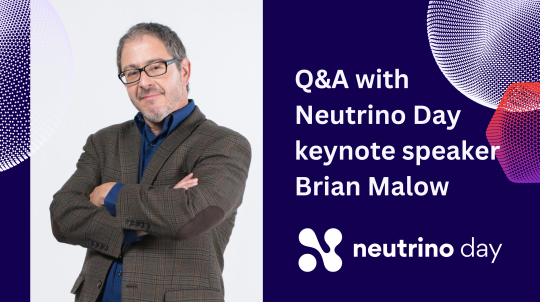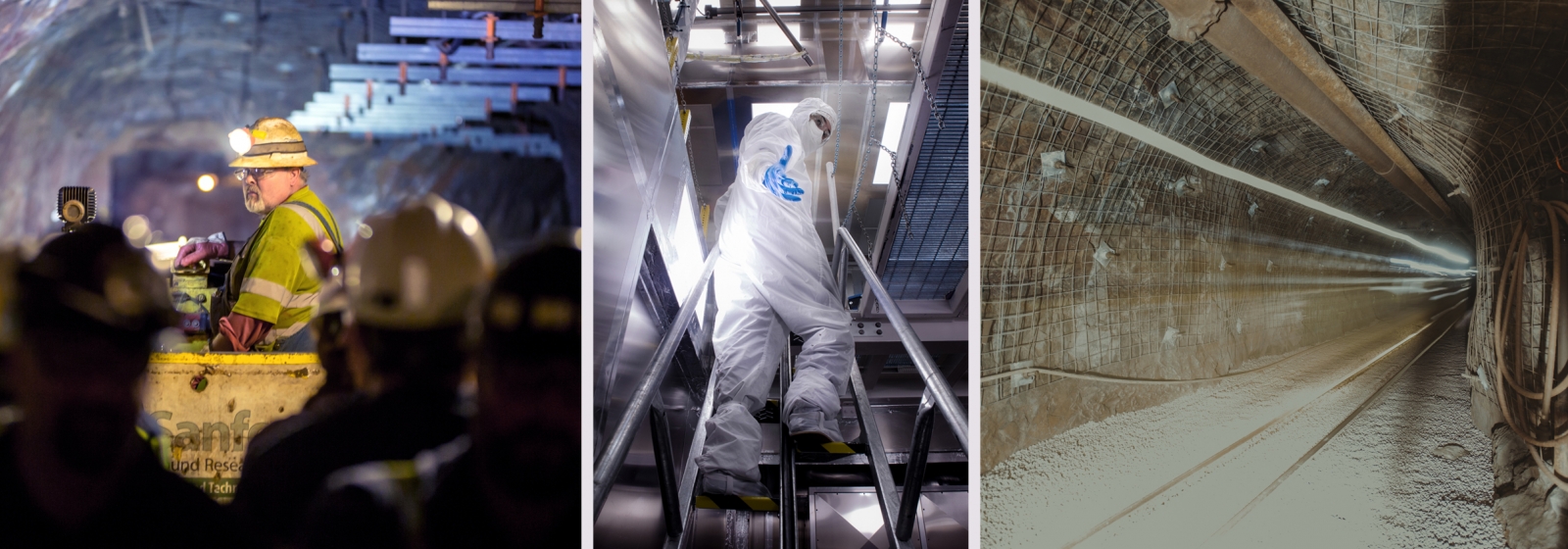Earth’s premiere science comedian Brian Malow to keynote Neutrino Day on July 8

It was a hot July day in 2020, and science comedian Brian Malow had made it halfway through his stand-up routine without hearing a single laugh. He wasn’t bombing—he was performing for a virtual audience at Sanford Underground Research Facility’s (SURF) first online Neutrino Day festival. Hundreds of viewers had tuned in from their homes for the pandemic-era performance, but their laughter never made it back to Malow’s home studio. “Usually, this is when I would pause and wait for your laughter,” he said during the 2020 Neutrino Day finale. “But I might be waiting for a long time!”
In 2023, Earth’s premiere science comedian will return to Neutrino Day—this time, with a live, in-person audience.
“We are thrilled to invite Brian Malow back to Neutrino Day as this year’s keynote speaker,” said Constance Walter, coordinator of Neutrino Day.
Malow’s Neutrino Day stand-up special takes place on Saturday, July 8, at 4 p.m. at the Historic Homestake Opera House. The evening of smart, geeky laughter will round out a day of free science fun across the city of Lead, South Dakota. The festival features hoistroom tours, science activities and exhibits for all ages, live video chats with researchers underground, and engaging talks about the research happening across the region.
Malow has made a name for himself as the go-to comedian for all things nerdy. A favorite of Neil deGrasse Tyson’s StarTalk Radio, Malow has also produced science videos for Time Magazine and been featured in the New York Times, SF Chronicle, and Washington Post. He has even worked with NASA and the National Science Foundation, proving that his love for science is just as real as his comedy skills. His comedy has even been heard on an orbiting space shuttle.
Soon, Malow will add a live radio broadcast from nearly a mile underground to his resume. On Friday, July 7, at 11 a.m. MT, South Dakota Public Broadcasting’s In the Moment segment will be broadcast from the Davis Caverns at SURF, giving listeners a preview of the Neutrino Day speaker lineup.
We spoke with Malow about finding his comedy beat, exploring underground labs, and who gets to enjoy science. The interview has been edited and condensed for clarity.
SURF: What is “science comedy”?
Malow: Sometimes people think that I’m going to teach them about science using stand-up comedy. But I have a broader definition of science comedy. Some of what I talk about is maybe educational. But a lot of it is really silly. I draw from the vocabulary of science for analogies and metaphors. I don’t make fun of science. I celebrate science.
For example, one of my routines is about how when my mom would lose weight, my dad would gain weight, and vice versa. It was like the conservation of mass within our family. Is that educational? Not really. But is it silly and funny? Yes. I’m not really teaching you, but I’m playing off these concepts for silliness and for humor.
SURF: What came first—the science or the comedy?
Malow: I liked science way before I thought about going into comedy. It’s one of my earliest passions. So when I started doing comedy, it was pretty natural for it to be science flavored. Once I came up with the phrase “science comedian,” everything sort of crystallized around that. That led to other science communication stuff. I ended up doing science videos for Time Magazine, radio pieces for Neil deGrasse Tyson’s StarTalk radio, and blogging for Scientific American. I even had a four year stint working in public outreach at a science museum.
I just like a lot of things at the intersection of science and art. I do some photography, and the photography that I specialize in is insect photography and 3D photography. You can see it’s science and art. I’m also a big science fiction fan. Again, science and art.
SURF: Neutrino Day 2020 was one of your first entirely virtual performance. How did that challenge your approach to stand-up comedy?
Malow: It is weird to do stand-up comedy without an audience in front of you, to speak to the cold dead eye of the camera and not even be able to hear the audience sometimes. It may seem like stand-up comedians are delivering monologues. But it’s really a dialogue. I say my part, the audience reacts, and we play off each other, and we find a rhythm. And when you can’t hear the audience, it’s a bit of an adjustment. But fortunately, I have experience talking to a camera without an audience. So it’s not impossible. And sometimes, you see smiling faces in a Zoom call, which helps a lot.
SURF: Artificial intelligence has been making waves in many creative fields. Have tools like ChatGPT been making their way into the field of comedy?
Malow: I have played with AI art generators and a little bit with ChatGPT. I think it’s very interesting, and it does have a lot of potential, but ChatGPT often delivers cliché and redundant stuff. It definitely requires a writer’s eye to edit it and oversee it.
The basic idea behind these large language models is about predicting the next most likely word. But comedy, and maybe all art forms, are not about predictability. To get a laugh, you have to say something that surprises the audience. That might be a challenge for these models that are predicting the most likely next word, because jokes count on the element of surprise. Still, I never say never. I’m sure it’s going to get a lot better.
So many people are afraid of AI replacing artists. But it’s not AI versus artists. It’s a tool. Just like photography, just like synthesizers, just like Photoshop—these are tools, and anyone can use them. But in the hands of a talented artist, they could become really powerful. They require the artist’s eye and the artist’s sensibility to get the best results.
SURF: What are you looking forward to when coming to SURF in July?
Malow: Well, first of all, I’ve been waiting three years to visit SURF. I’m very excited to visit the lab and to go underground. How many people get this opportunity? I’m so fortunate that it’s actually the second one that I will have visited. A few years ago, I was at SNOLAB, the underground lab in Ontario, Canada. It’s not as if you’ve seen one subterranean neutrino experiment, you’ve seen them all—no, I want to see them all!
I love the idea that to perform some kinds of science experiments, you have to go to very extreme places like Antarctica or a mile underground in a former gold mine. There’s something almost funny about scientists going a mile underground, getting as far from the sky as possible, to study the stars and the Universe.
SURF: From blogging and documentaries to podcasts and live shows, you’ve done an immense amount of science communication. What is the driving motivation behind bringing science to all these audiences?
Malow: A lot of people will say, “I’m not good at science” or “science is just not for me.” I want people to know that science is for everyone. You know, art is not just for artists. Music is not just for musicians. And science is not just for scientists. I’m not a scientist, but I love science. I’m a science enthusiast. And there’s something of the teacher in me. Whenever I learn something, once I understand it, I’m compelled to share it with other people. Whether that’s in video or audio, or at an event like Neutrino Day, which is a science festival, we’re there to celebrate science. And it’s not just for the scientists. It’s for all of us.
Neutrino Day is SURF’s free, citywide science festival. Join us for hoistroom tours, science activities and exhibits for all ages, live video chats with researchers underground, and engaging talks about the research happening beneath your feet. Plan your Neutrino Day experience today!
